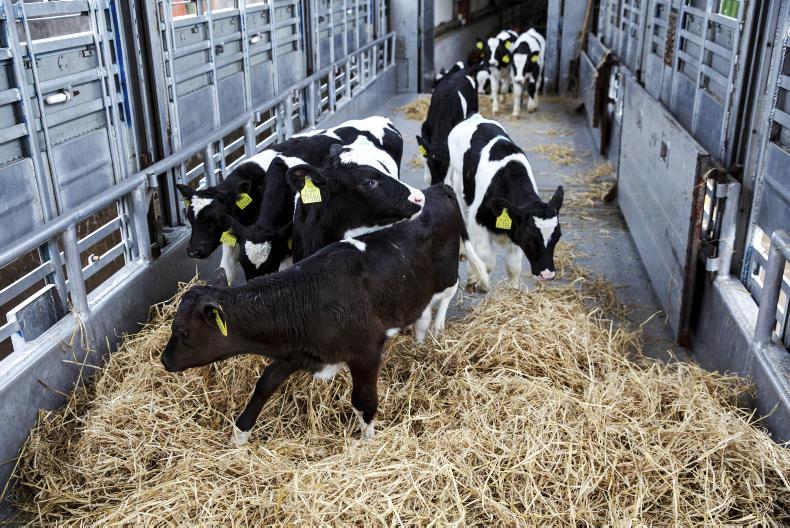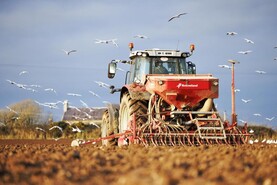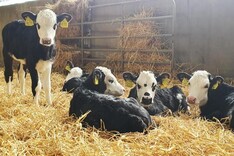Calf exporters have expressed disappointment and anger at the mistreatment of calves revealed at one of the resting lairages in Cherbourg.
“I’m very disappointed. Closer supervision of this lairage by the French authorities is needed,” said Mark Hallissey, who is based in Co Kerry and one of the largest exporters. “I want to see improvements.”
“Behaviour like that would not happen in my calf yard,” he said. “We are inspected. Any staff working in my farm have to be trained and have a certificate of competence in animal handling.”
Exporters want to see best practice when calves are handled, he said.
“The priorities are feeding each calf 3l to 4l of good milk replacer, suitable for calves in transit, made with milk and not plant proteins and with an electrolyte base to keep them hydrated. That will keep calves satisfied for hours.”
Behaviour like that would not happen in my calf yard
“The calves must be bedded with four to five inches of barley straw and given sufficient space. Obviously they must be handled properly and responsibly. There has to be sufficient numbers of trained staff. It’s not rocket science.”
Exporters want to see their stock well treated, he said.
“Even from a financial point of view, it’s in our best interests that calves arrive at their destination in top condition – that’s how you get a good price.”
Hallissey noted that there are good staff at the lairage in question in Cherbourg. He uses both lairages at the port.
Charges
The one at the centre of last week’s controversy typically charges €3 to €3.50 per calf for lairage space, while the other charges typically €2.50 per head. The second lairage is smaller, popular with exporters but booked up every week.
Five years ago, Hallissey tried to buy a farm near Cherbourg with backing from a number of other exporters, in order to establish and run a rest lairage. However, he failed to circumvent the strict local laws on non-nationals acquiring farmland.
“Perhaps it’s time again for exporters to look again at the feasibility of chartering a plane to fly calves to EU markets, or setting up our own lairage.”
The authorities have 10 months now to correct any problems at the Cherbourg lairage before the next peak in exports, Hallissey said.
“I want to see that done. Then some good will have come out of this incident.”
Read more
Turkish officials meet Creed on animal and semen exports
ISPCA calls for a suspension of live exports
Man arrested for cruelty against calves in France
Calf exporters have expressed disappointment and anger at the mistreatment of calves revealed at one of the resting lairages in Cherbourg.
“I’m very disappointed. Closer supervision of this lairage by the French authorities is needed,” said Mark Hallissey, who is based in Co Kerry and one of the largest exporters. “I want to see improvements.”
“Behaviour like that would not happen in my calf yard,” he said. “We are inspected. Any staff working in my farm have to be trained and have a certificate of competence in animal handling.”
Exporters want to see best practice when calves are handled, he said.
“The priorities are feeding each calf 3l to 4l of good milk replacer, suitable for calves in transit, made with milk and not plant proteins and with an electrolyte base to keep them hydrated. That will keep calves satisfied for hours.”
Behaviour like that would not happen in my calf yard
“The calves must be bedded with four to five inches of barley straw and given sufficient space. Obviously they must be handled properly and responsibly. There has to be sufficient numbers of trained staff. It’s not rocket science.”
Exporters want to see their stock well treated, he said.
“Even from a financial point of view, it’s in our best interests that calves arrive at their destination in top condition – that’s how you get a good price.”
Hallissey noted that there are good staff at the lairage in question in Cherbourg. He uses both lairages at the port.
Charges
The one at the centre of last week’s controversy typically charges €3 to €3.50 per calf for lairage space, while the other charges typically €2.50 per head. The second lairage is smaller, popular with exporters but booked up every week.
Five years ago, Hallissey tried to buy a farm near Cherbourg with backing from a number of other exporters, in order to establish and run a rest lairage. However, he failed to circumvent the strict local laws on non-nationals acquiring farmland.
“Perhaps it’s time again for exporters to look again at the feasibility of chartering a plane to fly calves to EU markets, or setting up our own lairage.”
The authorities have 10 months now to correct any problems at the Cherbourg lairage before the next peak in exports, Hallissey said.
“I want to see that done. Then some good will have come out of this incident.”
Read more
Turkish officials meet Creed on animal and semen exports
ISPCA calls for a suspension of live exports
Man arrested for cruelty against calves in France






 This is a subscriber-only article
This is a subscriber-only article










SHARING OPTIONS: